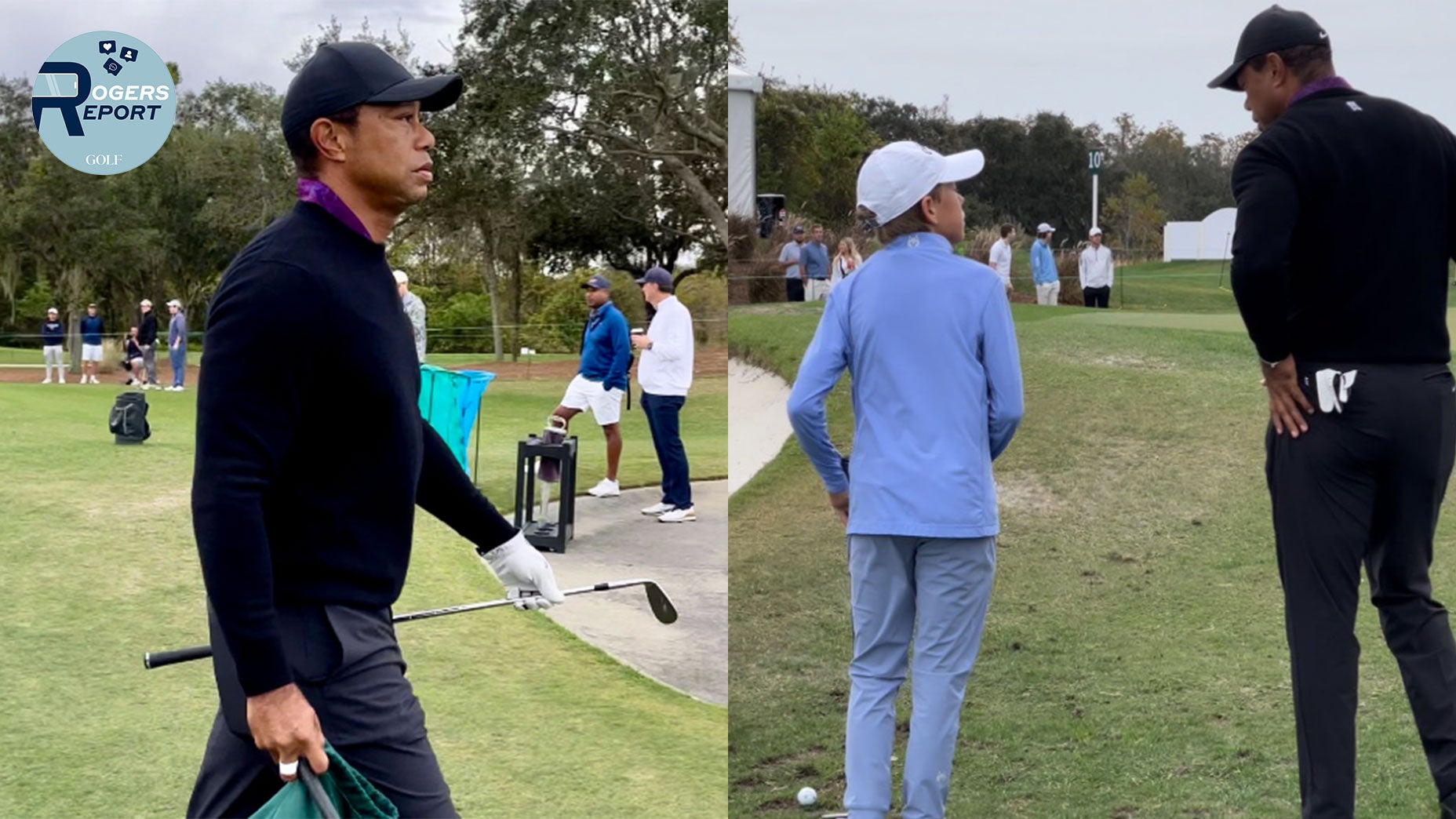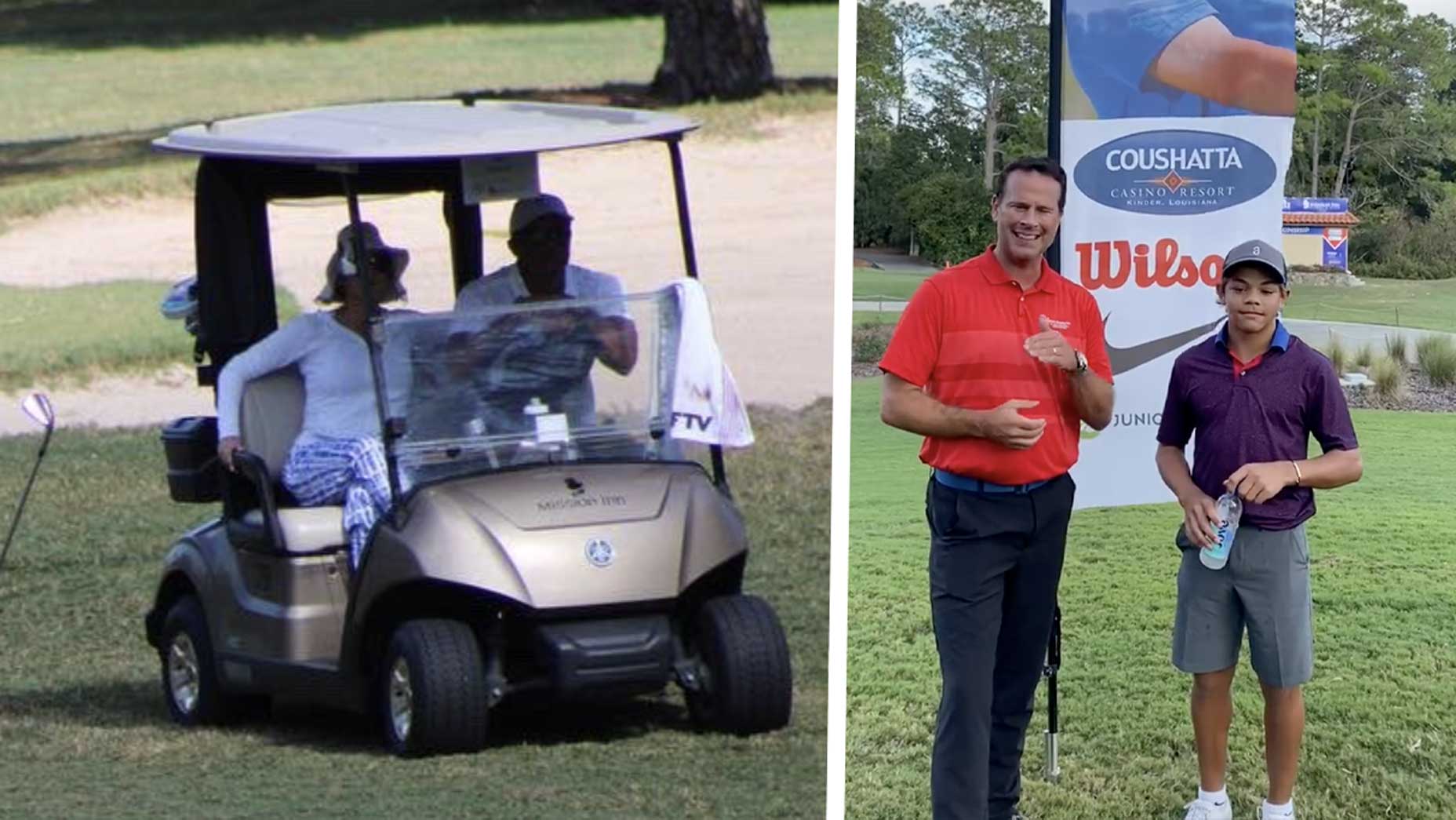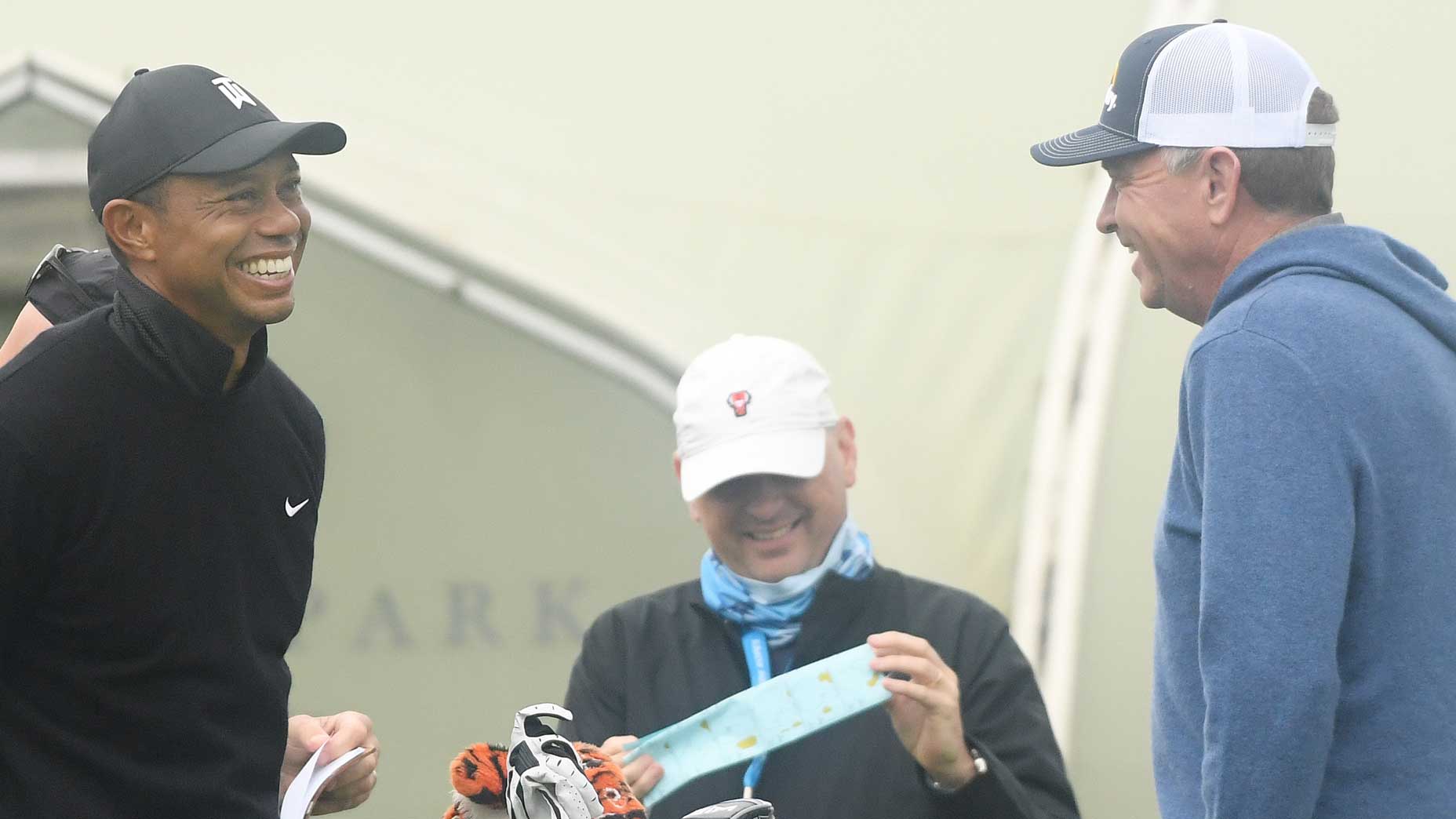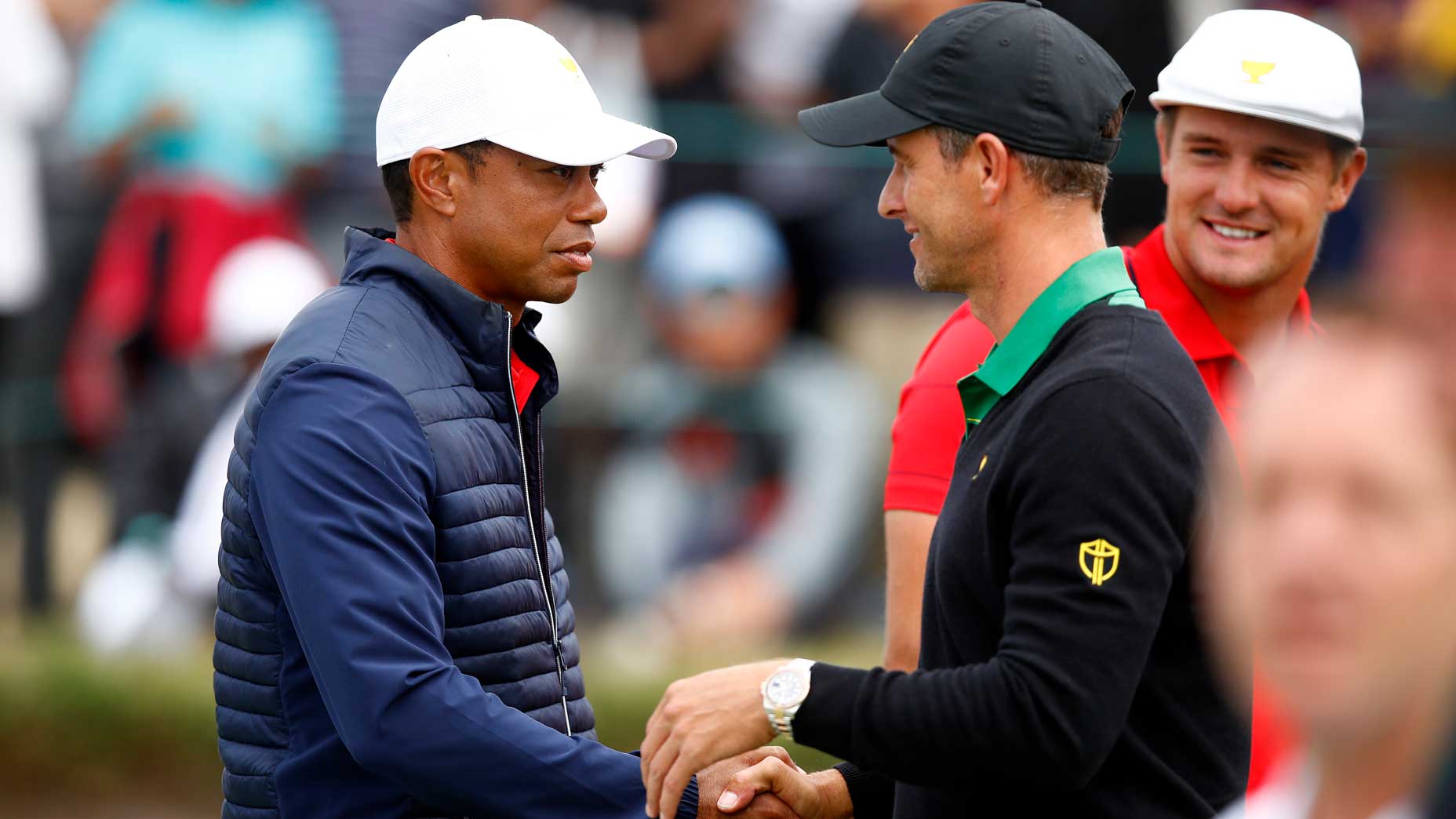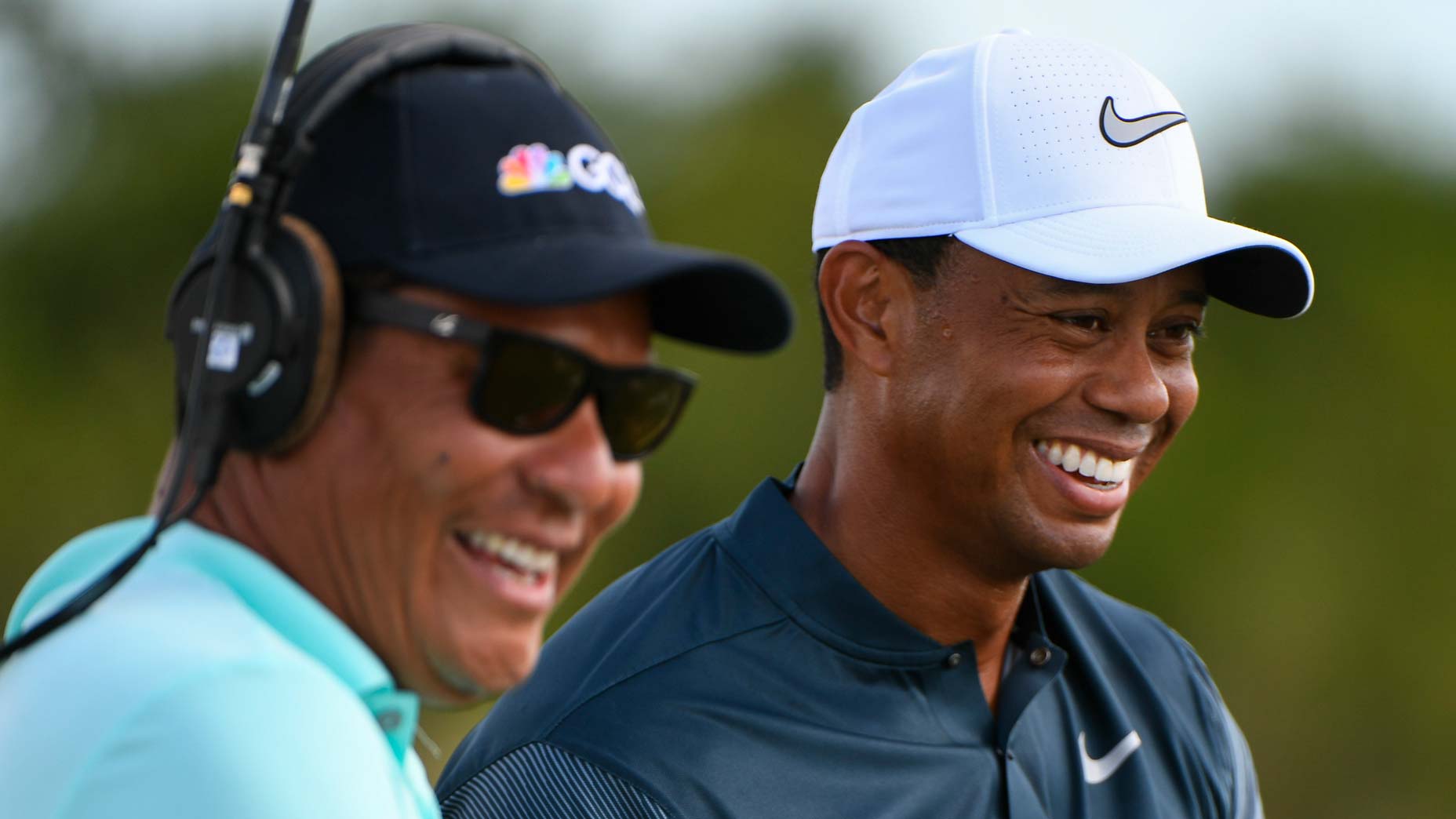How a cult hero and a conspiracy theory kept the Tiger Slam alive (barely!)
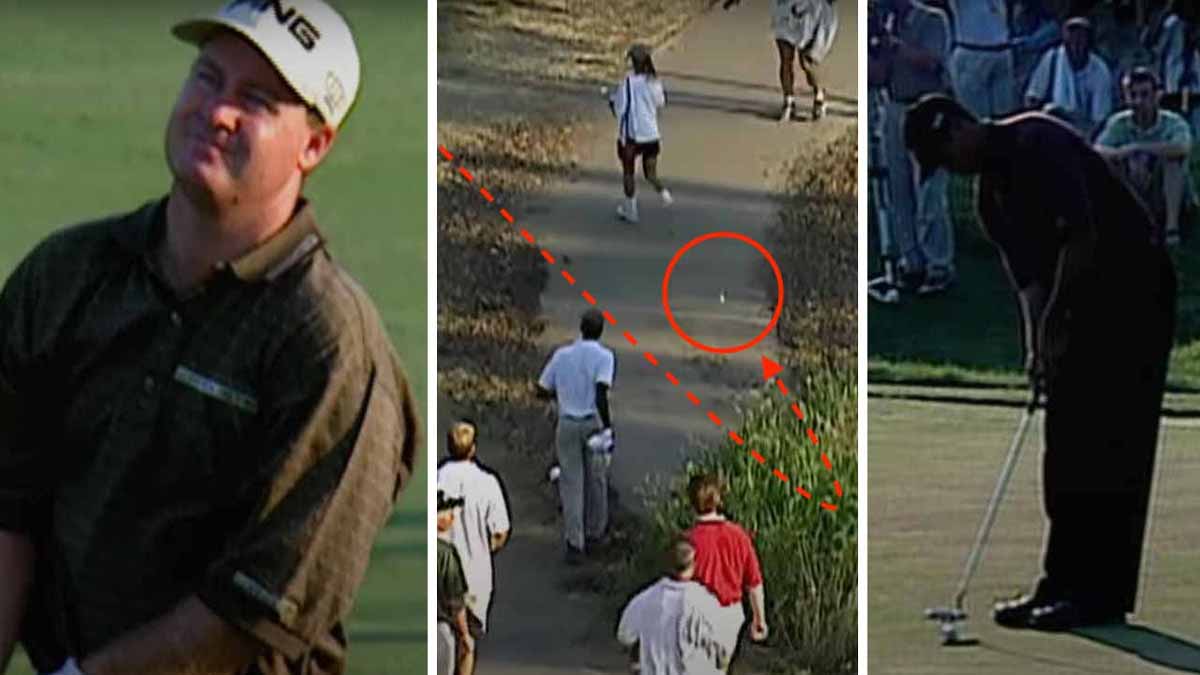
Bob May stared down Tiger Woods in an epic final round at Valhalla.
Welcome back to the Tiger Woods YouTube Project, where you’ll have to pardon us if we’re spending more time than we intended in the year 2000. It was a heck of a year, after all, and we’re not even addressing Woods’ wins at the U.S. Open or Open Championship — far too mainstream for the TWYP. Instead, we pick things up mid-Tiger Slam, and today we celebrate Bob May and the Klash in Kentucky (The Victory at Valhalla? The Legend of Louisville? Let’s move on…) from the 2000 PGA Championship.
What makes Tiger Woods’ showdown with Bob May such a perfect fit for our project here is just the fantastic elements involved that only get better upon rewatching. An incredible back-and-forth. A cult hero. A conspiracy theory. You’ll see what I mean.
Two things, by way of refresher: First, Bob May opened the PGA with an even-par 72 and then shot 66-66-66. Yowza! Second, if Tiger Woods had not been playing this tournament, May would have won by five shots over Thomas Bjorn (-13). But this ain’t the Bob May YouTube Project, after all. Third, Woods actually knew his opponent quite well — May was a big-timer on the California junior golf scene some half-decade ahead of Woods — but to the casual golf fan tuning in to watch Woods take down another major, he was a relative nobody.
Woods led after the first round. He led after the second round. He led after the third round. And he lifted the trophy. But getting to that final point wasn’t so easy…
Tiger Woods YouTube Project, Chapter 17: Tiger vs. Bob
RELATED: Chapter 16 — Tiger’s craziest comeback you’ve already forgotten about
This week’s edition has an element of Choose Your Own Adventure. Those of you content with just a taste of the May-hem (sorry) should check out the 4-minute version below. Those looking for full immersion can dive into the 44-minute cut included below that. Either way, read on for the biggest takeaways from our own Alan Bastable.
Heart still pounding after the rollercoaster ride of that playoff? You’re not the only one. My boss Alan Bastable joined GOLF Magazine in March 2000 — clever timing on his part. But that timing (plus his natural talent and wit) makes him particularly suited to assist in a look-back at this tournament’s greatest hits. Let’s dive in!
What do we think of the script that’s being written with May vs. Tiger?
Alan Bastable, executive editor, GOLF.com (@alan_bastable): The David-vs.-Goliath script didn’t need much trumping up. Bob May really was a wholly unexpected foil. While he had established himself as a solid PGA Tour player in 2000 (T23 at the U.S. Open that year, T11 at the British, 48th in the world ranking heading into Valhalla), May was a central-casting journeyman. In the years before, he’d bounced around Asia and Europe in search of his first professional win. This was not a guy who appeared primed to lock horns with the most dominant force the game had seen in a generation, and maybe ever.
It wasn’t just May’s record that made his gritty performance at the PGA such a surprise. It was everything about the guy: his 5-7, doughy dad-bod frame. His slightly hitchy swing. His drab, 50 Shades of Brown outfit in that final round. Hell, his name. Bob May. That’s not a dude who stares down Tiger in the decisive moments of a major. That’s your accountant. Your kid’s science teacher. Your neighbor who’s always there for you when you need to borrow an egg. And yet…there was May on that steamy Sunday, unflinchingly playing the role of Rocky to Tiger’s Drago. It was hard to fathom.
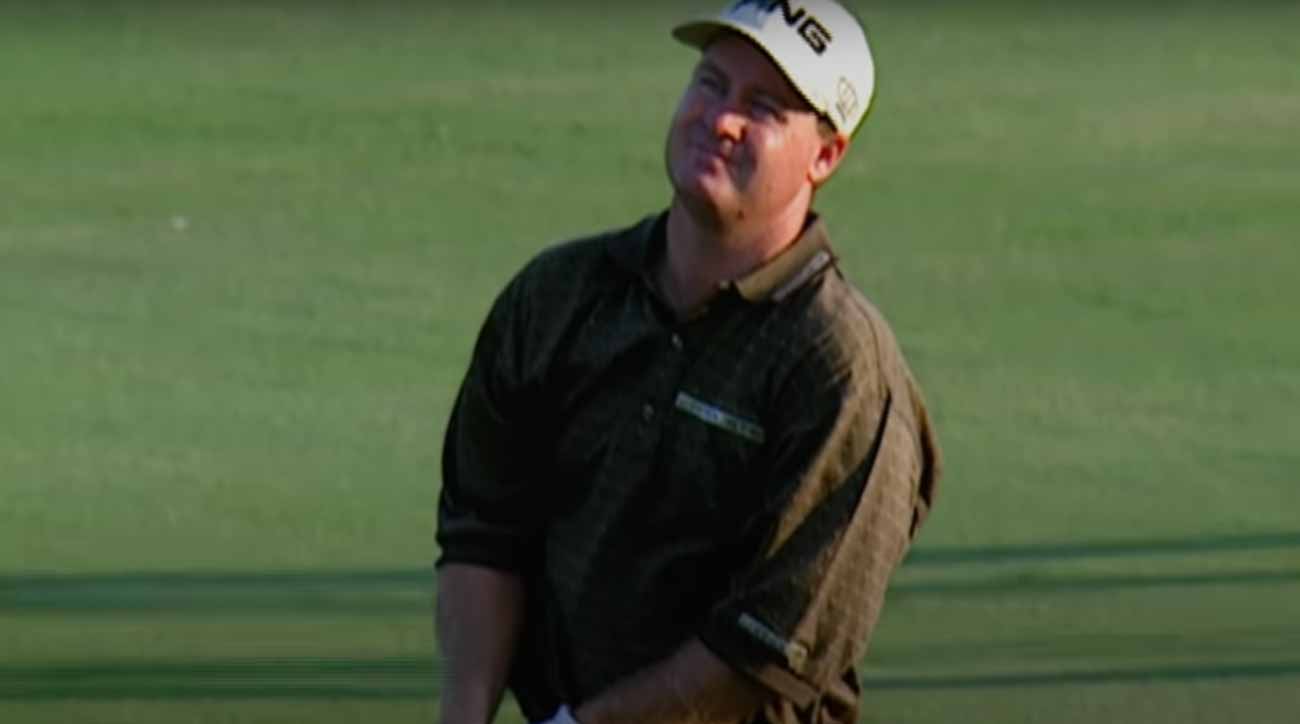
That Tiger Woods birdie putt on the first hole, where he’s chasing after it…
Bastable: Poor Bob. He’d just executed the chip of his life and had to be thinking that he’d be moving to the second playoff hole still knotted with Woods. Then Tiger drops a bomb, walking and pointing his ball into the back of the hole. It was rare bit of animation from robo-Woods and remains an iconic moment, not only in the tournament but in Tiger’s career. The putt was a microcosm of Woods’s Sunday — every time May gathered momentum or tried to pull ahead, Woods would drop a putt on him. Not sure Tiger missed a putt inside of 15 feet on the last nine holes of regulation or in the three playoff holes. All of which made May’s resolve all the more impressive. Woods’s automatic-ness had to be demoralizing, but May just kept getting up off the mat and coming back for more.

What do we make of the phantom bounce on No. 18, that brings Woods’ tee shot back into play?
Bastable: To be honest, I’d forgotten all about this grassy-knoll moment, and re-watching it, I couldn’t help but think how much fun it would have been had it happened in the social media era. The conspiracy theorists would have melted Twitter. It was a wild sequence: Tiger tugs his tee shot left. His ball appears to fly into a mound of long grass. An official (I think?) with a towel (I think?) in his hand points at the mound, suggesting Tiger’s ball had burrowed in there. Then a fan in white hat suddenly darts out from behind the long grass, as does Tiger’s ball — with the fan sprinting after it.
Did the spectator kick the ball? Unlikely, the ball seemed to have too much pace for a kick. Did the fan pick up the ball and throw it? Possibly. Nantz is mystified. Venturi says a rules official reported no foul play, but umm … gosh, the manner in which in which the ball momentarily disappeared and then came rocketing backward out of the thick grass. How? I think NPR needs to reinvestigate the scene in a 12-part podcast.
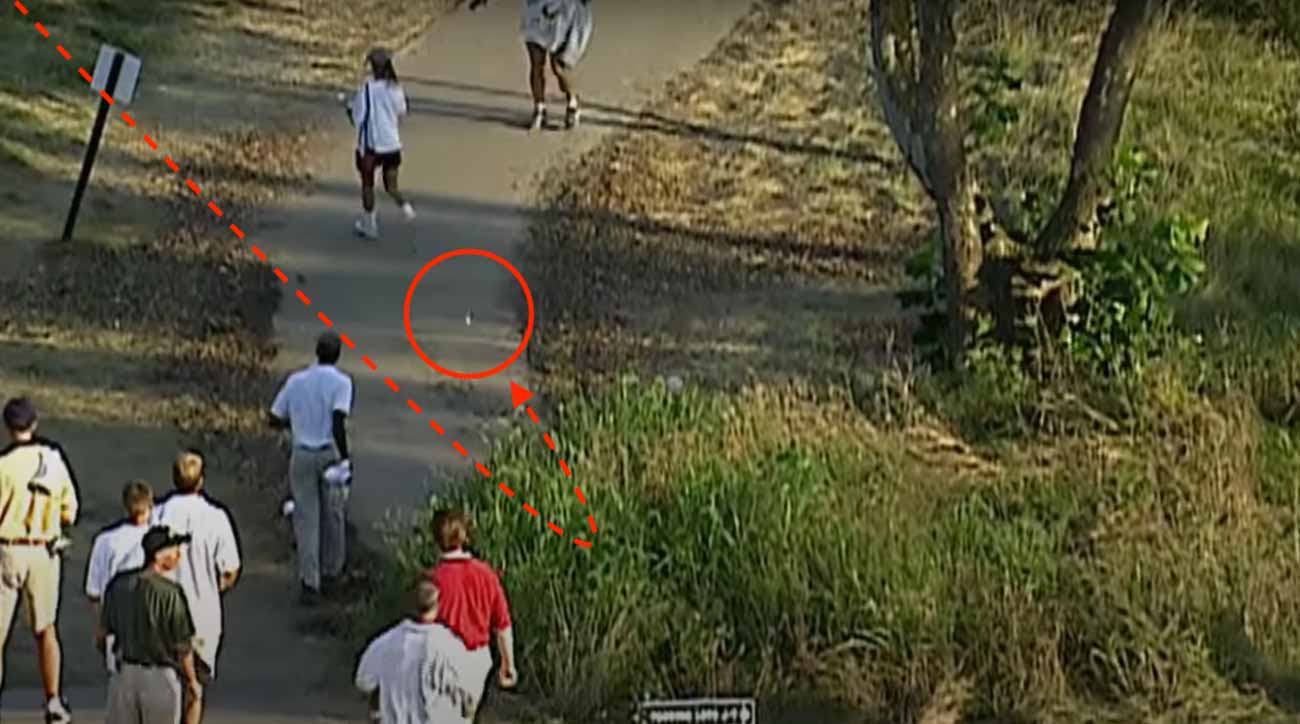
It was undoubtedly a horrible struck of bad luck for May, or a fantastic stroke of good luck for Tiger. If that ball buries in the long grass, it’s quite possible the ball is lost, or if it is found, it’s unplayable. That would have, of course, changed the trajectory of the playoff. Maybe Tiger makes double and May wins. Who knows? That said, Tiger didn’t exactly capitalize on his good break, knocking his ensuing shot off hardpan into another bad lie in the rough. May didn’t lack for chances to draw blood in this playoff, but he seemed to run out of gas.
What do we learn about Tiger Woods from rewatching this?
Bastable: Mostly we’re reminded how flippin’ unbeatable Tiger was during that glorious run in 2000-01. The PGA was Woods’s seventh win of the year. He hadn’t shot worse than par in 27 rounds and his scoring average was a silly 68.59. He was just too good. And his putting — my goodness, his putting. Rewatching the back nine in regulation and the playoff, you’re transported back to the halcyon days when Woods didn’t miss putts when they mattered. Ever. If he had a putt of import, it was going in. You might think that kind of predictability was boring for fans. But it wasn’t. It was the opposite. Tiger knew the putt was going in. His opponents knew it. You knew it watching from your couch. And it never got old. Spieth had a touch of that in him a few years back. It’s a rush to watch.
Okay, now to the good stuff. Hit me with whatever else struck you upon re-watching!
Bastable: Our assignment was to watch the playoff, but since I’m an overachiever, I went back and also watched some of regulation. The back-nine dual was every bit as riveting as I remembered it to be, with each player outdoing the other on seemingly every shot. It was like a game of H-O-R-S-E between two of the Dude Perfect guys, only with slightly higher stakes. It reminded me a little of that epic Rory vs. Reed match at the 2016 Ryder Cup. You wished it could have lasted forever.
May’s putt on 18 in regulation — a downhill double-breaker from 15 feet — was all-universe. I really think it was a 1-in-20 in terms of make percentage for a Tour pro. Maybe 1-in-30 for a 15-handicapper. No matter how many times you watch it back, it still looks it might miss. Given its difficulty and the magnitude of the moment, the putt belongs among the best makes in major-championship history.

After May’s brilliant chip to kick-in range on the first playoff hole, Tiger gives Bob a quick, “Nice shot.” Peter Kostis says, “Tiger will always acknowledge his opponents’ good shots — always.” Felt like a bit of an overstatement, no? I’ve never thought as Tiger as an opponent flatterer, especially in moments when he’s trying to step on their throats.
The CBS guys were good, though. Made me pine for the days of McCord, Feherty and Kostis doing their thing on the same squad. McCord’s glee after Tiger’s point-and-walk-it-in putt on the first playoff hole perfectly captured what we were all feeling at home. Those guys had an undeniable chemistry that the CBS crew sorely lacks today.
Unrelated: I can’t recall a tournament when the grandstand shadows were so prominent — don’t know if it was the time of day/year, or the position of the infrastructure, but the shadows seemed to come into play on every green.
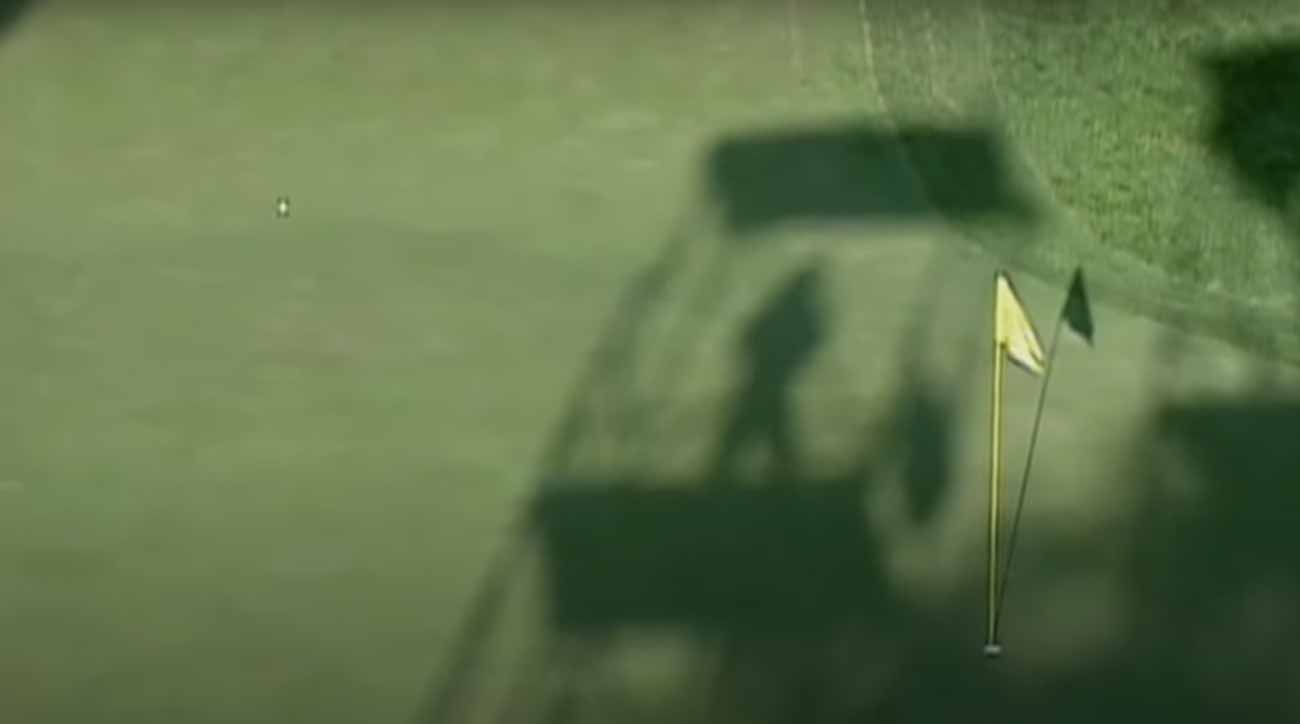
Am I going crazy or did Woods almost miss his tournament-winning tap-in on the 18th hole in the playoff? Looked like he sliced across the ball, pushing it the right edge of the hole, almost to lip-out territory. Nantz called the putt a “no-doubter.” I’m not so sure.
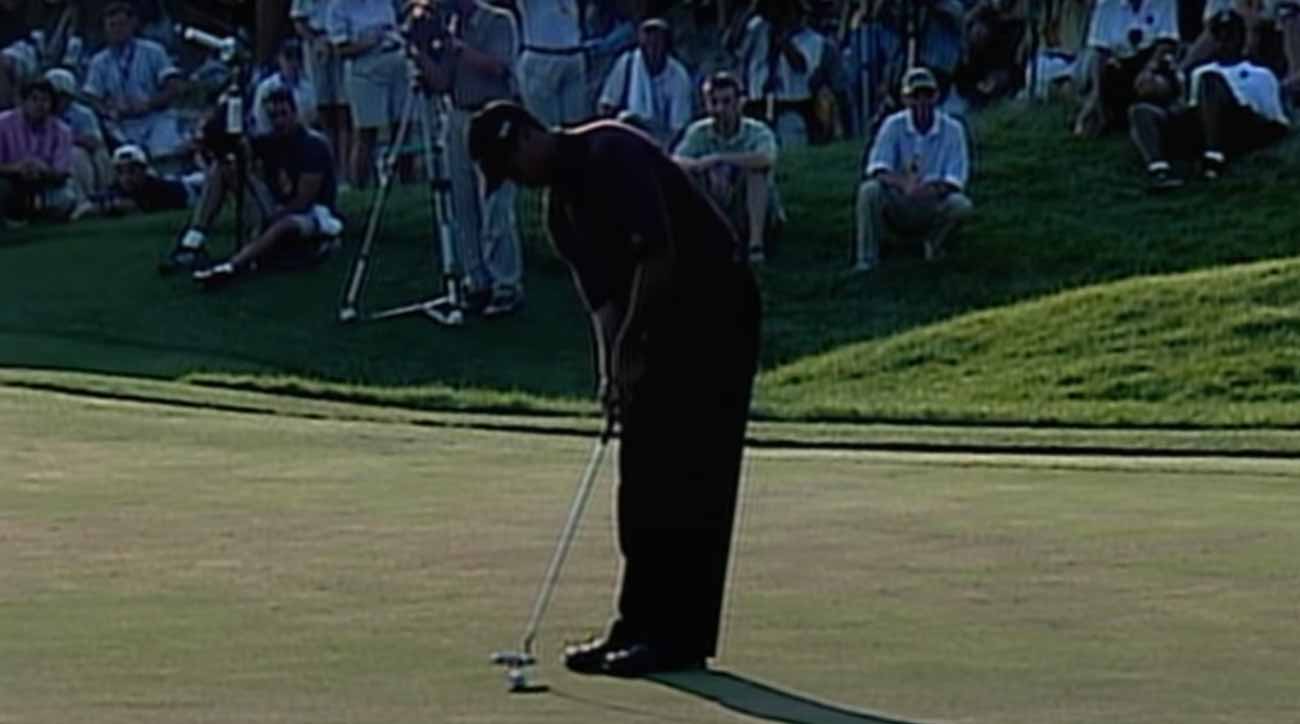
It was fun to see Steve Williams back in action. He and Tiger were some pair — the ultimate alpha golfer and the ultimate alpha caddie. There’s a scene after Tiger’s won, when he and Stevie are standing side by side next to the green. Stevie’s still talking his ear off, seemingly chirping orders. His job was never done.
The turn of the century wasn’t all that long ago but when you watch golf telecasts from that era, they do feel of another time. The grainy standard-def imagery. The baggy trousers, and shirt sleeves extended over elbows. Venturi in the tower. Tiger making every damn putt he looked at. Also, Jack! And Tiger! In the same group! How cool was that? Nicklaus and Woods played the first two rounds together that week. (With Vijay, lol.)
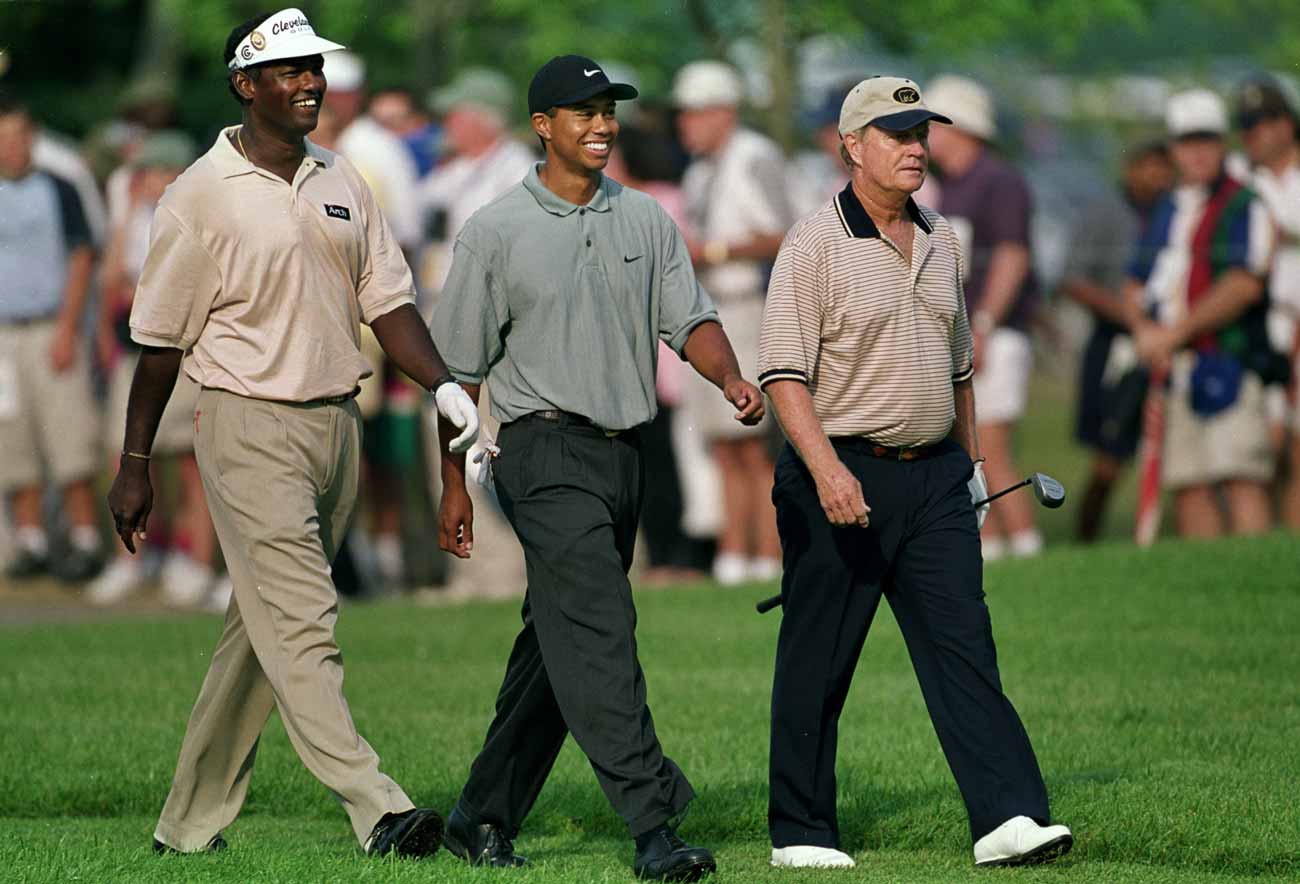
A final piece I’d forgotten was how poor the quality of play was in the playoff. All those smoked drives, flagged irons and holed bombs from the back nine in regulation? There were few signs of that grade of shotmaking in the playoff. Tiger couldn’t find the fairway — he had a two-way miss going — and Bob looked like a guy who had just finished his first marathon, and was then told he had to run another five miles. He was so clearly gassed. Maybe Tiger was, too. (That bunker shot May hit from the greenside bunker on 17 looked like a touch of genius — he got just enough of it to get it up and out over the lip, from where it trundled down to the hole. But there’s no question he got away with one. The swing had some decel, and the contact was unintentionally chunky.) It was ugly golf. On 18, even Nantz said Tiger and May were “chopping it up.” He wasn’t wrong.
For more Tiger Woods YouTube Project:
CHAPTER 1: What Tiger’s first-ever TV appearance taught us
CHAPTER 2: Here’s the first time we ever saw Tiger play golf
CHAPTER 3: Was this Tiger’s most revealing interview ever?
CHAPTER 4: What’s it like when Tiger comes to your hometown?
CHAPTER 5: Here’s what Earl “trash-talking” Tiger looked like
CHAPTER 6: What was it like to play on Tiger’s high school team?
CHAPTER 7: 10 obscure facts about Tiger Woods, high school senior
CHAPTER 8: Tiger’s first trip to Butler Cabin
CHAPTER 9: “You’ll learn”
CHAPTER 10: Tiger’s first Nike campaign
CHAPTER 11: Tiger sits down with Oprah
CHAPTER 12: Tiger predicts the future with Larry King
CHAPTER 13: How Tiger Woods’ most iconic commercial happened by accident
CHAPTER 14: David Feherty’s unforgettable rain-delay Tiger interview
CHAPTER 15: How Tiger and Michael Jordan became friends
CHAPTER 16: Tiger’s greatest comeback you’ve already forgotten about




